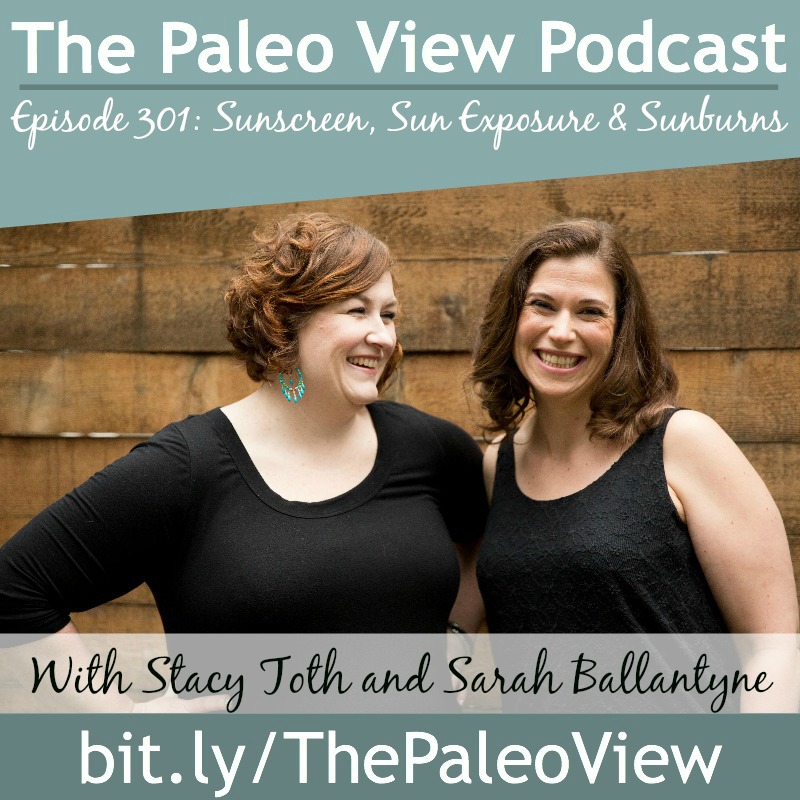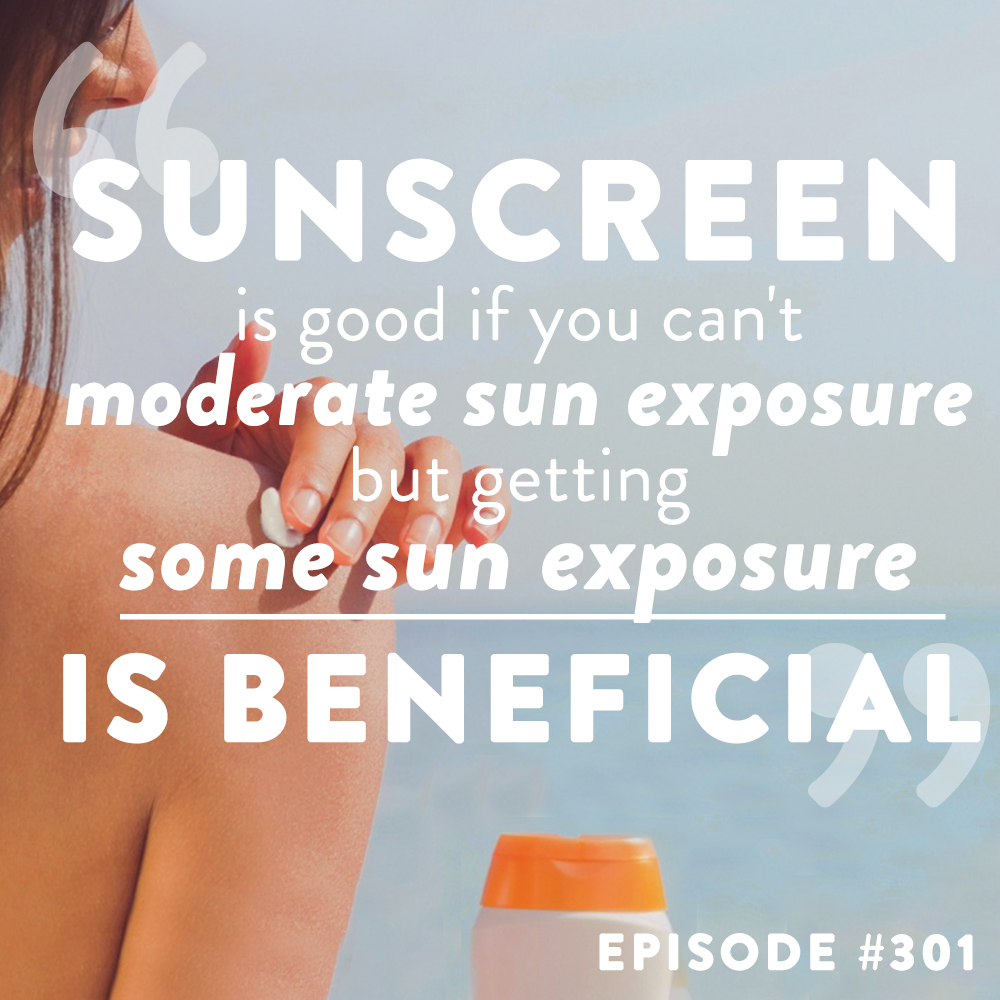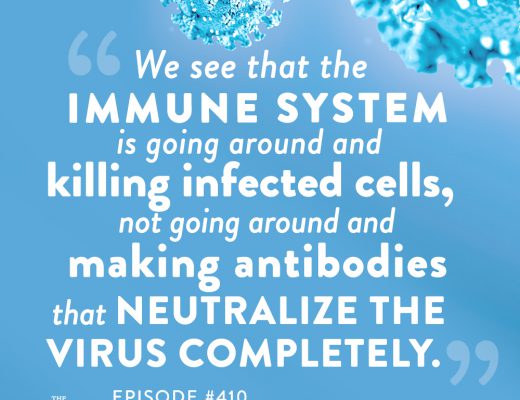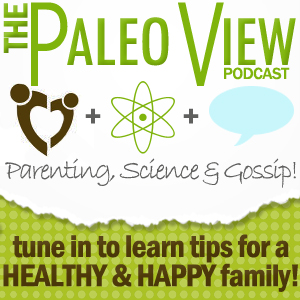Ep. 301: Sunscreen, Sun Exposure & Sunburns

In this episode, Stacy and Sarah are talking all about the pros and cons of the very sun in the sky!
Click here to listen in iTunes
or download and listen by clicking the PodBean Player below
![]()
If you enjoy the show, please review it in iTunes!
The Paleo View (TPV), Episode 301: Sunscreen, Sun Exposure & Sunburns
- Intro (0:00)
- News and Views (0:40)
- This week’s podcast breaks the record for most research done on a topic for a podcast!
- We’re hoping to give you well-rounded, consensus, and nuanced information.
- There is a lot of science on this information, and it doesn’t always agree.
- Shoutout to our listeners for sending wonderful supportive feedback after we asked last week!
- Sun & Skin (12:25)
- The background: Stacy’s family is very fair-skinned, and she is very aggressive with sunscreen use. She has looked into the safety of sunscreen- what kind of sun is good and not good, plus not adding harmful chemicals to our bodies.
- What are risk factors for skin cancer?
- This is the dominant motivator for wanting to protect our skin.
- Sun exposure is a risk for skin cancer, but is different for different forms of skin cancer.
- Melanoma: most dangerous, highest mortality rate.
- More related to sporadic intense exposure with burns.
- Interestingly, people tend to get this on parts of body not most-exposed to sun.
- This probably indicated that contributing factors are more complex.
- Basal and Squamous Cell Carcinoma are much milder and typically easier to treat.
- The highest risk is total UV exposure, cumulative to date.
- The more sun exposure, especially burning, the higher your chance.
- Melanoma: most dangerous, highest mortality rate.
- There are other risk factors for skin cancers (and other cancers) as well:
- Vitamin D deficiency.
- Exposure to chemicals.
- Having a weakened immune system.
- Smoking.
- Family history.
- Fair complexion or being a red-headed.
- Having moles increases risk of Melanoma.
- Men are at higher risk of skin cancer than women.
- Is it true that childhood sunburns increase your risk of skin cancer later on in life?
- One study showed that overall there was no increase risk for melanoma.
- There was a slight increased risk for melanoma in your 20s, but not overall in life.
- There is a group of studies showing that sun exposure is a risk factor for skin cancer.
- It is likely a collection of factors.
- For example, sun exposure in the context of not getting enough antioxidants in the diet.
- In the context of increased inflammation from chronic disease.
- In the context of vitamin D deficiency.
- In the context of more chemical exposure.
- It is likely a collection of factors.
- Sun Tan vs. Sun Burn
- These are two different things, caused by two different mechanisms.
- A sun tan is caused from melanocytes in the skin producing melanin (a dark pigment).
- Having a lot of melanin in your skin protects from damage from the sun.
- This is why people with darker complexions have lower risk of skin cancer.
- Burning is really just cellular damage.
- When you have a lot of cells dying from sun exposure, it triggers an inflammation response- which is what causes the heat/inflammation and and makes the skin so red.
- How intense the sunlight is, and how long you were out in it versus how fair you are is the formula for a sunburn.
- These are two different things, caused by two different mechanisms.
- Sunscreen use related to skin cancer risk.
- Prior to 1980 this was true, which is probably because there were a lot of chemicals used in sunscreen that have since been removed.
- These chemicals were inert by themselves, but when exposed to the sun turned carcinogenic.
- Currently no form of skin cancer is associated with sunscreen use.
- There is a collection of studies that looked at prevention of skin cancer with sunscreen use.
- These studies didn’t show a strong effect.
- This may be because people are using sunscreens to stay out in the sun longer.
- It may have to do with the type of sunscreen they are using.
- These studies didn’t show a strong effect.
- Prior to 1980 this was true, which is probably because there were a lot of chemicals used in sunscreen that have since been removed.
- Benefits of non-burning sun exposure.
- Could people be going so overboard with sunscreen use that they are missing out on some of the benefits of sun non-burning exposure?
- Vitamin D deficiency: 75% of Westerners are vitamin D deficient.
- Stress relieving and circadian rhythm benefit to being out in the sun.
- A recent article compared life expectancy of people with different sun exposure times.
- High sun people did have an increase risk of skin cancer but lower risk of other health problems.
- There may be benefits of sun exposure that we don’t completely understand.
- Could people be going so overboard with sunscreen use that they are missing out on some of the benefits of sun non-burning exposure?
- Overview of sun exposure.
- It is important to not get sunburned, as this increases risk of skin cancer.
- It is better to use a sunscreen and still get sun exposure if you would otherwise burn.
- Moderating sun exposure is important- some sun exposure is beneficial.
- Is an anti-inflammatory, nutrient-dense diet related to reduced sunburn?
- Our skin has natural antioxidants and protective mechanisms.
- It is chronically being assaulted by everything in the environment.
- It is constantly regenerating to maintain a barrier between the inside and outside of our bodies.
- A higher plant phytochemical diet can reduce the chance of getting sun burned.
- Astaxanthin is one of the stronger antioxidants that helps with this.
- This is in red and purple type vegetables.
- It is also found in seafood.
- Astaxanthin is one of the stronger antioxidants that helps with this.
- There are photolyase enzymes in our skin that exist to repair DNA damage.
- These are activated by visible light, and different ones are activated by different wavelengths.
- Our bodies are amazing and they do have ways of repairing and protecting ourselves against sun damage.
- Our skin has natural antioxidants and protective mechanisms.
- Sunscreen and what to look for.
- We will get into this in greater detail next week, though we don’t want to leave you hanging right now!
- There are two different types: chemical and physical.
- Physical sunscreens are mineral based and reflect UV radiation.
- Chemical sunscreens work by absorbing radiation and dissipating it as heat.
- These are a class of chemicals that have high skin irritant and allergic reaction rates.
- Many of these chemicals have been identified as endocrine disruptors.
- Many of these chemicals have been associated with damaging the coral reef.
- Hawaii recently banned chemical sunscreens for this reason.
- We look forward to continuing this conversation next week, as well as the science of the different types of sunscreens!
- Stacy personally looks for mineral sunscreen that is non-nano and non-aerosol.
- Stacy uses Beautycounter, but there are a lot of great safer options available now.
- If you’ve enjoyed the show, please recommend it to someone who might enjoy it.
- We love when you share and when you leave reviews for us! Thanks for listening!
Support us by shopping through links on our sidebars- thank you!





